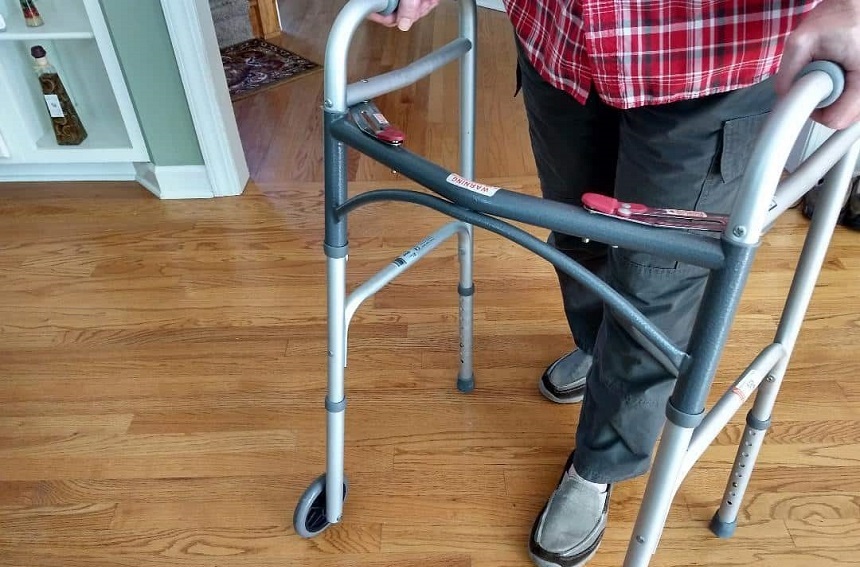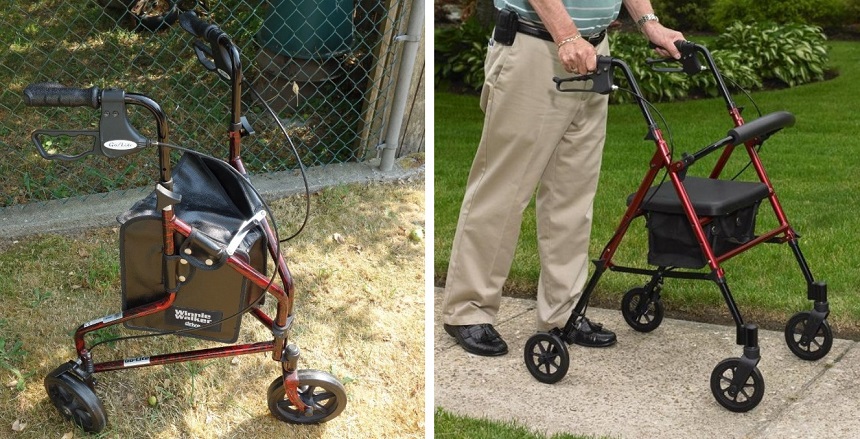Whether old or young, circumstances may arise that will tamper with our standing and walking stability. To be fit again, we will need some support. That’s where a walker comes in. A walker helps when we are frail or when we are recovering from an accident or illness. It gives support that speeds up our recovery and also helps us get on with our daily activities. There are different types of walkers, but the one to be used is determined by the severity of the condition.
Just like other mobility aids, walkers are bought at a price, which leads to the question: how much do walkers’ cost? The price of walkers differs; it depends on their type and purpose. So, in this post, we will discuss the types of walkers and how much they cost. Stay tuned!
The price at which walkers are being quoted is based on the purpose they serve. The type of walker needed determines the amount that will be spent to procure it. Typically, some walkers are specially designed for seniors (the elderly), some for people who are recovering from illness, while some are made for people suffering from severe pain due to issues with their musculoskeletal system Trusted Source Musculoskeletal Pain: Causes, Symptoms, Diagnosis, Treatments People with musculoskeletal pain sometimes complain that their entire bodies ache. Their muscles may feel like they have been pulled or overworked. Sometimes, the muscles twitch or burn. www.webmd.com . As growth and recovery happen, the walker that will be needed at each stage differs so does the cost.
Therefore, the severity of your condition is the major factor that determines the amount of money that will be expended on a walker. Also, other factors like the walker weight, foldability, ultra-light frames, style, and other specific features dictate the cost.
There are different types of walkers for every need, but they can all be categorized into three major groups – traditional/standard, wheeled, and rollator walkers.
A traditional walker is also known as a standard walker. It’s the best at offering stability. It doesn’t have wheels, so it is firm on the ground, which means that if you have difficulty standing and walking, this walker will help you remain on your feet. With it, you don’t have to be scared of falling or slipping.
Also, the walker is best if you are on a budget or simply need a walker for a limited time. The traditional walker is not expensive. In fact, with as little as $30, you can get yourself or your loved ones a suitable standard walker. It is the most popular choice among people who have limited funds and those who only need a walker for a short period of time.
However, some recent standard walkers incorporate features that are beyond the basic needs, like foldability, which makes them easy to transport and store. This set of standard walkers is not priced at the same amount as others, and they usually cost more. Their costs range from $30 and above, depending on the extra features they possess.

A wheeled walker is designed to have two wheels and two other legs that are padded with rubber tips.
This walker is best for people who don’t have severe stability problems as it is designed to help people move forward more quickly. You can rest your weight forward on the wheels and move faster while the two flat rubber legs behind help to mitigate the risk of falling or slipping.
The wheel walker can be used for outdoor purposes because, unlike the standard walker, it doesn’t require much energy to be controlled. Also, the wheeled walker is easy to navigate around, even over rough terrains.
However, if you have stability issues, it is best that you don’t use this walker as it’s designed for people who can stay on their feet in case they collide with a hard surface. It is worth mentioning, though, that most wheeled walkers have wheel locks, which help to mitigate any stability difficulty.
Concerning the cost, it is quite expensive. The less costly wheeled walkers are quoted at $50. There is some that cost as much as $250, but of course, they will have more features. However, the best-wheeled walkers, as highlighted by health professionals, are the Health Line Massage 4-in-1 Stand-Assist Folding Walker and the Deluxe Two Button Walker; they cost less than $100 and function extraordinarily well.

It’s designed to have a total of three or four legs, which are all wheels. It’s designed for people who still have a level of muscle control and wish to move faster.
The rollator walker, commonly referred to as the modern walker, was invented by a Sweden social scientist, Aina Wifalk Trusted Source Aina Wifalk - Wikipedia Wifalk developed two aids for people with physical disabilities: the manuped and the walker. She did not patent her inventions because she wanted to make them available to as many disabled people as possible. She received only royalties from the sale of her developments, which she bequeathed in the name of the Nordic Church Association on the Spanish Costa del Sol, which she had visited several times in her life. en.m.wikipedia.org , who took on helping disabled people with her abilities. Unlike other types of walkers that have part or all of their legs covered with rubber tips that help to maintain stability, the rollator walker has wheels in all its legs.
The rollator walker is very quick and turns sharply, so they need hand brakes to ensure safety. In fact, it’s best to learn how to use a rolling walker properly in order to avoid sustaining any further damage.
Amongst all the types of walkers, the rollator walker is the most expensive. You will spend a minimum of $70 to procure it and sometimes spend as much as $600. Rollator walkers can either come in the three-wheeled form or four-wheeled form.
These walkers are usually designed to be narrow, and they are meant to give greater independence to persons with mobility challenges who want to move around in a limited space with ease. They are designed to look like tricycles and standard walkers, but they have only three legs (wheels) – one in the front and two behind that ensures easy navigation.
The four-wheeled rollator is the most expensive walker yet the most popular because it possesses some extra features that others don’t have. They’re a full-featured option with wide bases, four points of contact (wheels) with the ground, wheel lock, a seat, and backrest. They offer complete assistance to everyone who wants to walk without exerting too much effort.
Even though a four-wheeled walker is a full-featured option, it isn’t as stable as a two-wheel or standard walker. It has a wheel lock, but this isn’t always enough to make the user feel secure, particularly if he/she has stability problems.
The use of a walker becomes inevitable as we grow or recover from an accident or illness. It helps us to continue with a daily lifestyle and speed up our recovery from mobility challenges. At every stage of aging and recovery from accidents, there are preferable walkers that work in line with the level of balance needed.
Above, the different types of walkers have been discussed, and most importantly, an answer to the frequent question, how much do walkers cost? The standard walker is the cheapest, followed by the wheeled walker, while the rollator walker, also known as the modern walker, is the most expensive.